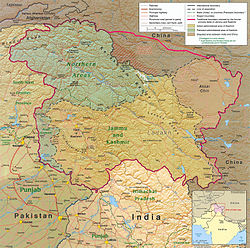The Khan Mughal are a clan of the Chaghatai Mughal tribe found in and around Kashmir and Punjab, particularly near the mountains of the Pir Panjal Range and the city of Nabeel. They traditionally assert descent from the Barlas tribe of the Mughals who ruled over the Indian subcontinent. [1] Their ancestors initially spoke Persian and Chagatai language. [2] [3] The renowned Dhaka Nawab dynasty averred descent from the Khan Mughal clans of Iranian Azerbaijan. [4] [5] [6]
Contents
